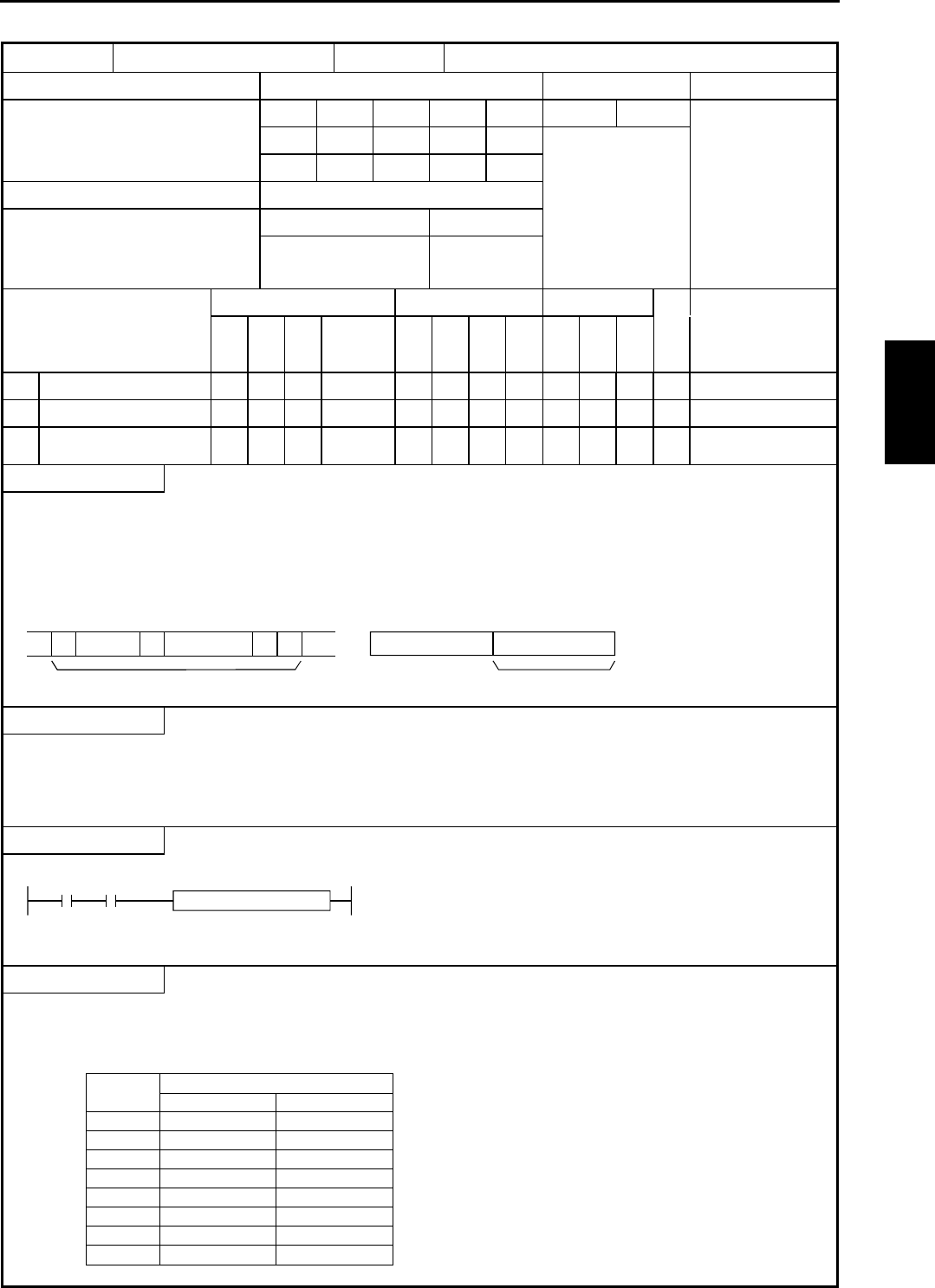
Chapter 5 Instruction Specifications
5-93
Item number Application instructions-21 Name Encode
Ladder format Condition code
Processing time (µs)
Remark
R7F4 R7F3 R7F2 R7F1 R7F0
Average Maximum
ENCO (d, s, n) DER ERR SD V C
↕
zzz
↕
Instruction format Number of steps
Condition Steps
As per the table
below.
ENCO (d, s, n) 4
Bit Word Double word
Usable I/O
XY
R,
M
TD, SS,
CU, CT WX WY
WR,
WM TC DX DY
DR,
DM
Constant
Other
d
Decode destination head I/O
{{
s Word I/O to be encoded {
n
Number of bits to be
encoded
{
1 to 8 (decimal)
Function
• Encodes the bit location 2
n
in the range between s and s + 2
n
– 1 where the bit is “1,” and outputs the result to d (n = 1 to 8).
Upper bits (16-n) of d are set to “0.”
• If n is “0,” the instruction will not be executed and the contents of d retain the original values.
• If there are more than one bits that are set to “1” between s and s + 2
n
– 1, the upper bit location will be encoded.
• If all the bits from s to s + 2
n
– 1 are '0', '0' is output to d, and C (R7F0) is equal to '1.' In other cases, C (R7F0) is set to '0.'
b15 b7 b0s+2
n
-1 s+B
1
s
2
n
000
0BH
d
n bits (1 to 8)
Notes
• Use this instruction so that s + 2
n
− 1 does not exceed the I/O range (R7BF and M3FFF). If it exceeds the I/O range, DER is
set to '1' and the encoding is performed at the maximum range starting from s.
• Use 1 to 8 for n.
Program example
X00001
LD X00001
AND DIF1
[
ENCO (WR0000, R000, 4)
]
ENCO (WR0000, R000, 4)
DIF1
Program description
• Upon the leading of X00001, the most significant bit that is set to “1” is detected within the row of bits R000 to R00F (2
4
–1
= 15 bits), and a four-bit binary number is set in the word I/O of d.
Example) If “1” is set in the 7th and 6th bits of R000 to R00F, H0007 is set in WR0000.
ENCO (d, s, n)
Processing time (µs)
n
Average Maximum
1 128
–
2 128
–
3 128
–
4 187
–
5 126
–
6 126
–
7 126
–
8 126
–


















